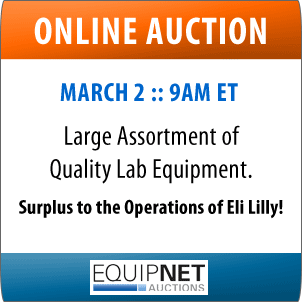|
Jun 07
2010
|
No. 11: COMPLIANCE: Why not use lower-grade drug compounds in animal labs to save money?Posted by: PIA in Tagged in: Untagged
|
|
Sign Up to receive free weekly articles like these
REGULATORY COMPLIANCE
Why not use lower-grade drug compounds in animal labs to save money?
Reader Question: I believe I could save a lot of my grant money by occasionally using non-pharmaceutical-grade compounds in my research animals. The drugs seem perfectly safe, just cheaper. Are there any problems with this?
Expert Comments:
Both the National Institutes for Health (NIH) and U.S. Department of Agriculture (USDA) have posted regulatory guidance on this topic, and both are opposed to the use of non-pharmaceutical grade (aka chemical grade) reagents in animals. While this is not an absolute prohibition, they both emphasize that “cost savings alone do not adequately justify the use of non-pharmaceutical-grade compounds in animals.” Let's consider three scenarios:
Case 1: An investigator might be tempted to produce her own 0.9% sodium chloride using distilled water and chemical-grade NaCl. Autoclaved, or passed through a micropore filter, why not use it for fluid therapy in an anesthetized mouse? NIH cites concerns about sterility, pharmacokinetics, pyrogenicity, stability, and quality-control — all part of producing pharmaceutical grade agents. Homemade normal saline sterilized for immediate use really only fails on the pyrogen-testing front. Pyrogens can be present in sterile solutions and can pose a serious threat to animal health. Most IACUCs would be unlikely to approve this departure from the general rule against non-pharmaceutical agents. Do I need to explain why an IACUC would reject this, given that it would meet most of the concerns?
Case 2: A trickier question is use of tribromoethanol (aka “avertin”) as a mouse anesthetic. This is available only as the separate chemicals, not as a pharmaceutical-grade drug. Should an IACUC allow its use? There are pharmaceutical grade mouse anesthetics (such as ketamine combinations and isoflurane inhalation), after all. And problems documented with avertin manufacturer's quality-control illustrate the danger of using chemicals as drugs.1 The number of papers published using avertin as a mouse anesthetic show that if an investigator is convinced that avertin is the best anesthetic for the job, the IACUC likely will approve its use.
Case 3: One milligram of the current commercially available sodium pentobarbital formulation approved for human use costs twenty times or more what a milligram of a veterinary euthanasia drug costs. Should an IACUC approve diluting (possibly with micropore filtration for added sterility assurance) the veterinary euthanasia product for use as an animal anesthetic, simply to contain costs? Both are pharmaceutical-grade compounds. Both are off-label uses (whether using a human drug in nonhumans, or using a euthanasia drug for anesthesia). If there is a national or international consensus on this, this author has yet to hear of it.
One challenge (possibly what drives the controversy over Case 3) is knowing whether a compound is USP Pharmaceutical grade or not. If the catalog says it is, trust them. If the catalog is silent, contact the manufacturer.
The bottom line is that pharmaceutical-grade agents should be chosen when they are available, and that application to specific situations is the jurisdiction of the IACUC.
1. Lieggi CC, Fortman JD, Kleps RA, et al. An evaluation of preparation methods and storage conditions of tribromoethanol. Contemp Top Lab Anim Sci 2005;44:11-16.
Expert comments by Larry Carbone, DVM, PhD, Dipl. ACLAM, senior veterinarian and associate director, Lab Animal Resource Center, University of California-San Francisco.
See Dr. Carbone's article "How Analgesics Can Affect Your Scientific Data" in the June issue of Laboratory Animal Welfare Compliance.
written by mousedoc, June 09, 2010
Top finds
- Casino Non Aams
- Migliori Slot Online
- Casino Not On Gamstop
- Casino Not On Gamstop
- Migliori Casino Online Italia
- Non Gamstop Casinos UK
- Best Non Gamstop Casinos
- Non Gamstop Casino Sites UK
- Non Gamstop Casinos
- Sites Not On Gamstop
- Betting Sites Not On Gamstop UK
- Best Online Casino Canada
- オンラインカジノ
- Real Poker Online
- Slots Not On Gamstop
- Non Gamstop Casinos
- Non Gamstop Casino Sites UK
- UK Casino Sites Not On Gamstop
- Slots Not On Gamstop
- Non Gamstop Casino Sites UK
- Casino Sites Not On Gamstop
- Meilleur Casino En Ligne
- UK Casino Not On Gamstop
- Best Betting Sites Not On Gamstop
- Migliori Casino Non Aams
- Top 10 Casino En Ligne Belgique
- Meilleur Casino En Ligne Belgique
- Migliori Casino Online Esteri
- 仮想通貨 カジノ 入金ボーナス
- Casino En Ligne 2026



